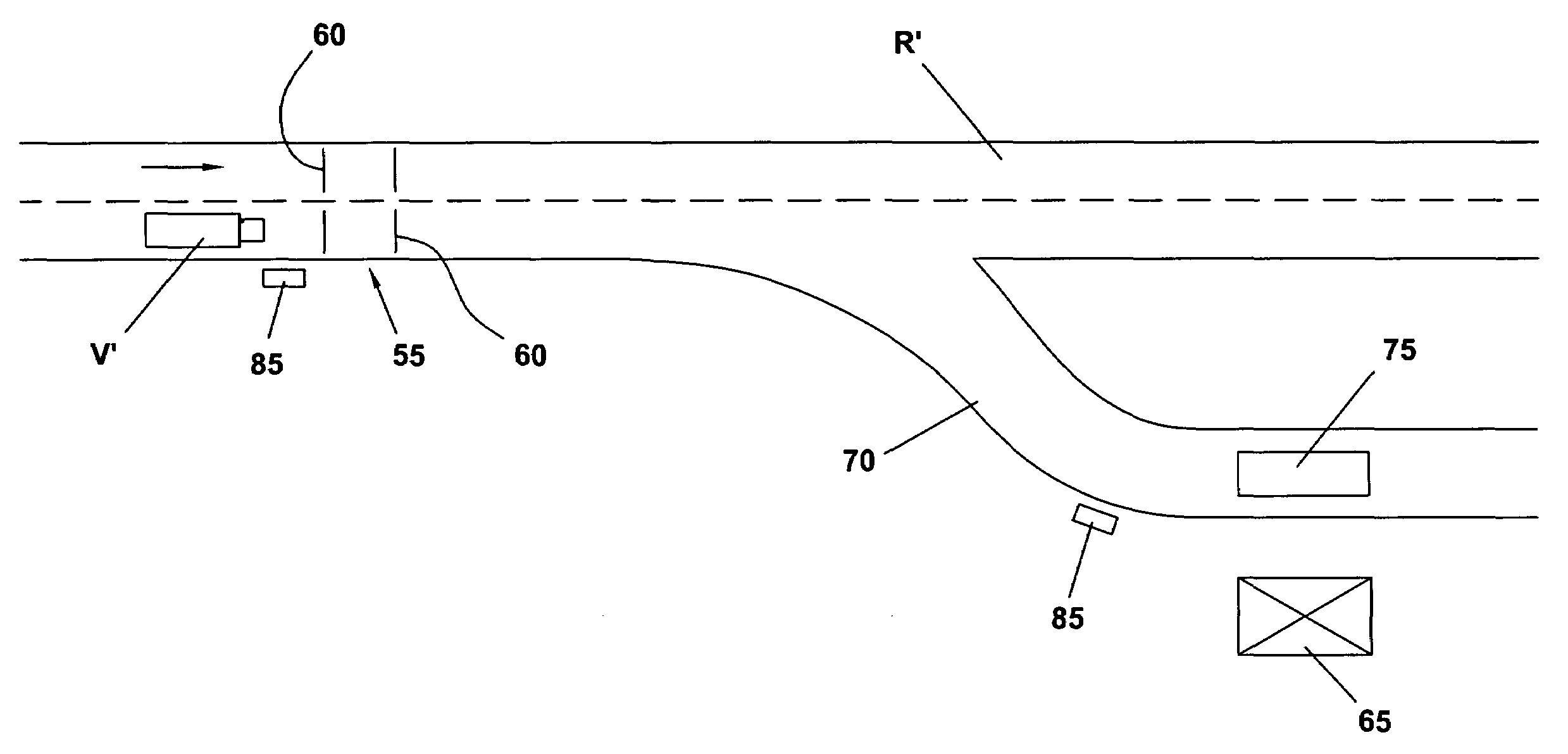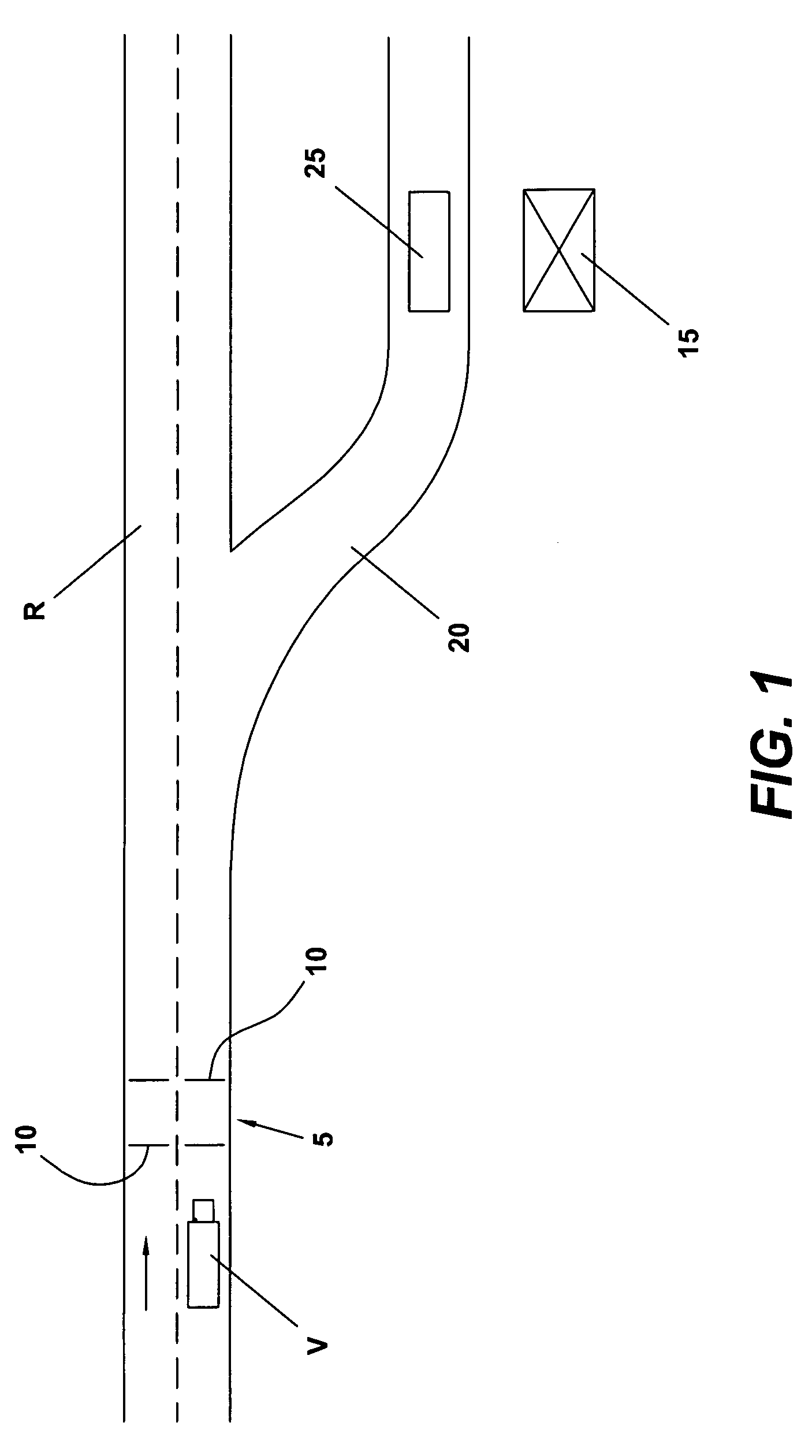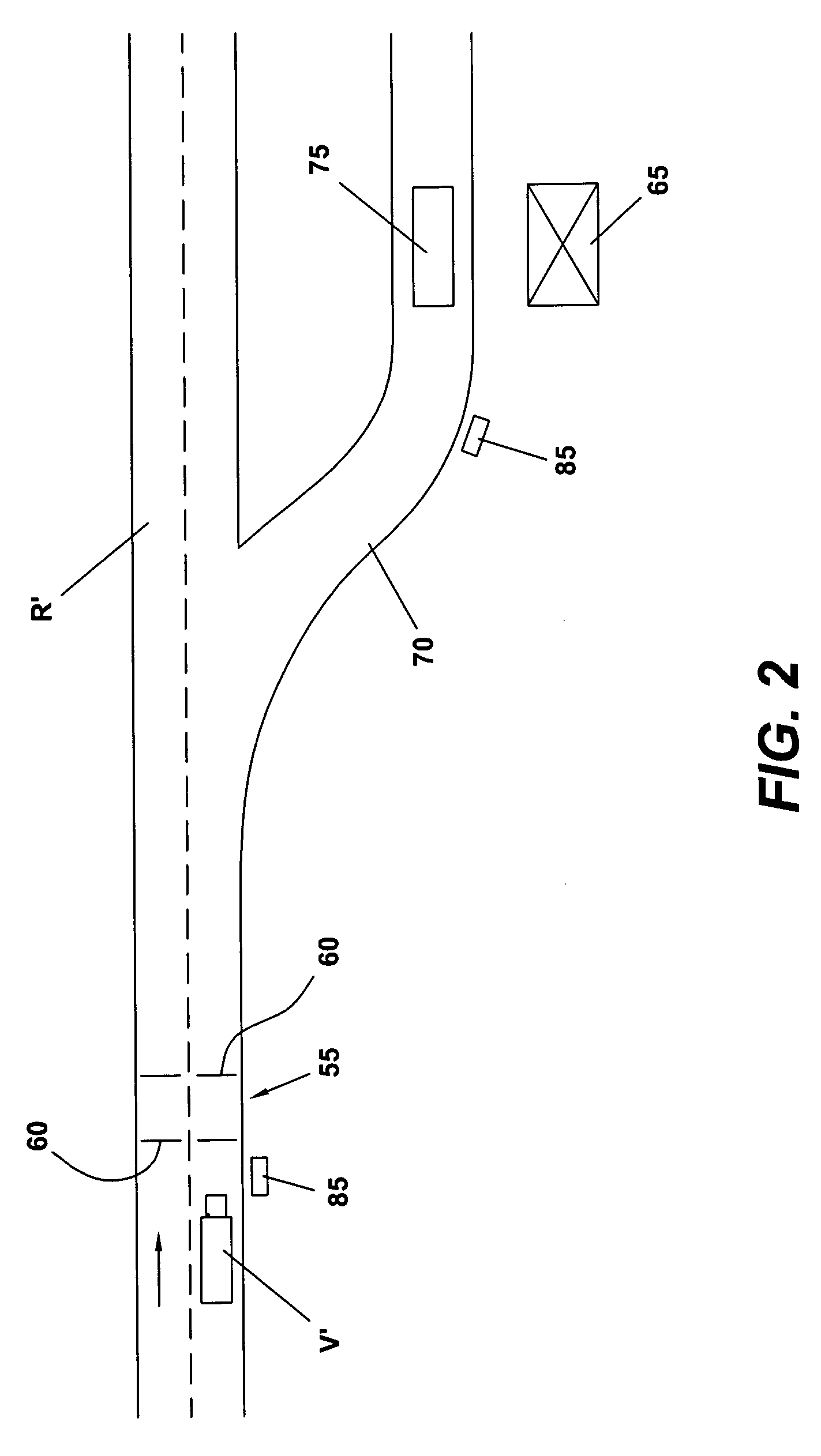Weigh-in-motion system with auto-calibration
a technology of automatic calibration and weight-in-motion, which is applied in the direction of weighing auxiliary devices, weighing apparatus details, instruments, etc., can solve the problems of affecting the accuracy of wim scales, and affecting the weighing of moving vehicles
- Summary
- Abstract
- Description
- Claims
- Application Information
AI Technical Summary
Benefits of technology
Problems solved by technology
Method used
Image
Examples
Embodiment Construction
)
[0016]FIG. 1 depicts one example of a known vehicle weighing system, such as might be commonly found along a roadway. As shown, vehicles to be weighed V, such as, but not limited to, tractor trailers, travel along the roadway R in the direction indicated by the arrow. The roadway R is commonly a highway, but may be any roadway carrying vehicles that must be weighed.
[0017]A weigh-in-motion (WIM) scale 5 is shown to reside in each lane of the roadway R, although one skilled in the art would clearly understand that a WIM scale could also be disposed in only one lane of a given roadway.
[0018]As shown, this particular each WIM scale 5 includes separate weighing sensors 10. Such a WIM scale 5 is typically able to determine the speed of a vehicle, to measure individual axle weights of a vehicle, to determine the total weight of a vehicle, to determine the class of a vehicle (such as by the distance between axles), and / or to determine various other vehicle characteristics. The WIM scales 5...
PUM
 Login to View More
Login to View More Abstract
Description
Claims
Application Information
 Login to View More
Login to View More - R&D
- Intellectual Property
- Life Sciences
- Materials
- Tech Scout
- Unparalleled Data Quality
- Higher Quality Content
- 60% Fewer Hallucinations
Browse by: Latest US Patents, China's latest patents, Technical Efficacy Thesaurus, Application Domain, Technology Topic, Popular Technical Reports.
© 2025 PatSnap. All rights reserved.Legal|Privacy policy|Modern Slavery Act Transparency Statement|Sitemap|About US| Contact US: help@patsnap.com



